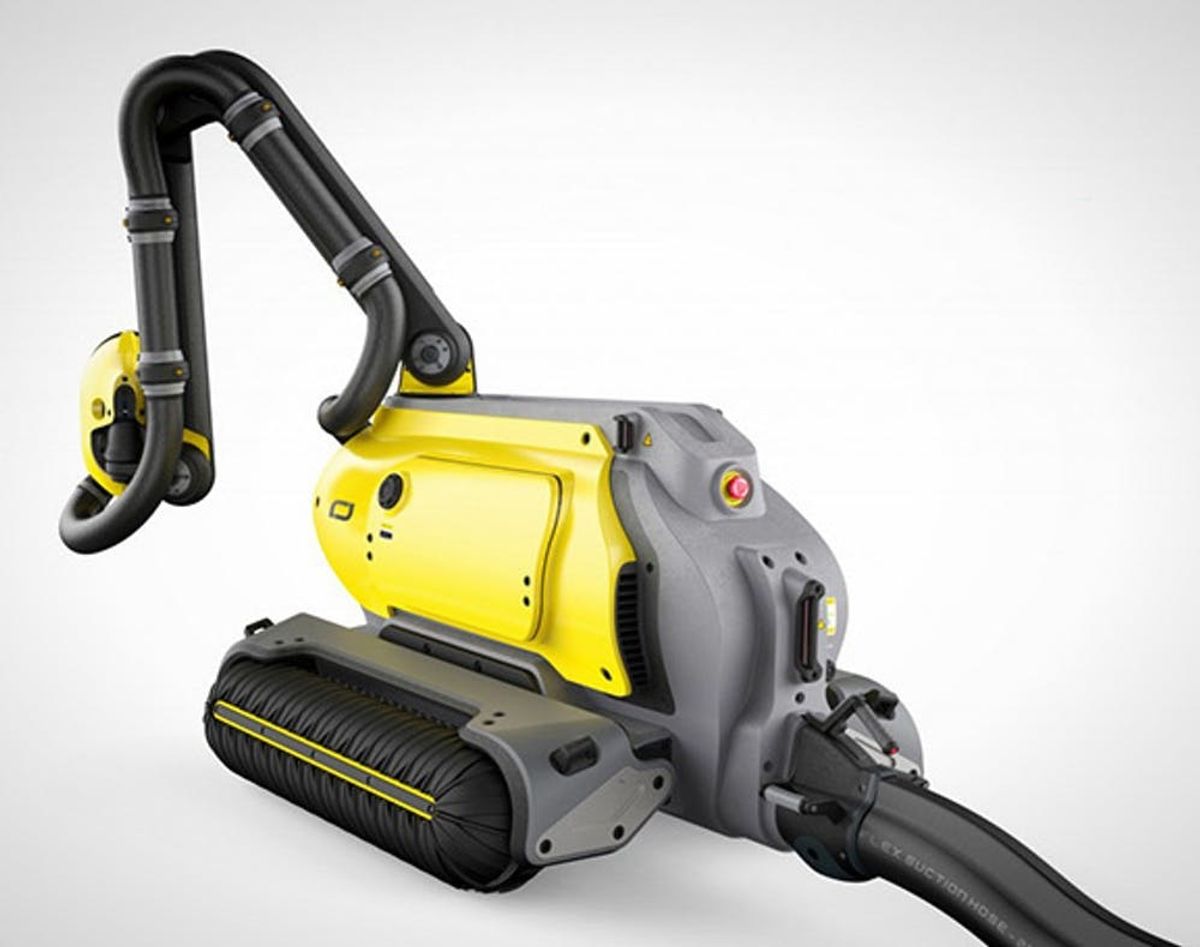
We’ve all seen what it looks like when a building gets demolished — a long process and what looks like a whole lotta waste. Design student, Omer Haciomeroglu from Umeå Institute of Design in Sweden might have a solution in the form of a recycling robot. He created a demolition robot that can eat concrete and could potentially change the construction industry forever, while majorly reducing the amount of waste and pollution that comes along with building. The machine is called ERO, short for erosion.
Currently in its concept phase, the robot will use microjets of high pressure water to exploit tiny cracks in concrete, breaking it apart and leaving behind bare metal rebar. Once the material is set free, ERO will busy itself with sucking up the dust cloud that comes with deconstruction and separating the sand and concrete in its internal filtration system.
The process reduces air pollution and makes the old material available for new projects. Omer envisions eventually combining the bot with a new business model, where separated materials are collected and re-used as prefab blocks to be sold locally for new building projects. Right there you have a couple of pretty massive eco points, but since all of this (the cleaning and separating) is happening onsite in the robot, and being sold in the local vicinity, there’s a big savings on transportation costs, time and pollutants. Who knew that a robot would be Mother Nature’s biggest fan?
The impact could be huge considering how much concrete the world consumes. In the U.S. alone we generate over 300 million metric tons per year, and a lot of it isn’t recycled. Not only will the business implications be hefty, considering a lot of our infrastructure is over 60 years old, but it could also mean big savings for taxpayers as construction costs drop. Imagine — less material sailing into the landfill, less noise pollution (please let this mean the jackhammer can die now) and a less wasteful, less dusty planet with inhabitants with healthier lungs.
Do you think this bot will make waves? Share your thoughts in the comments below!
(h/t Fast Company)



















